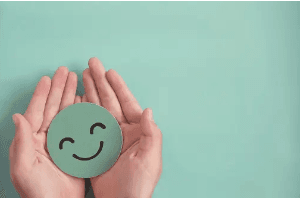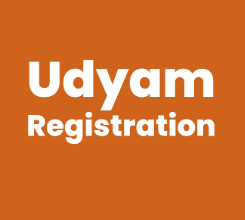
Embroidery has come a long way from its traditional roots, and machine embroidery is one of the most popular forms of this art. With the use of modern technology, it has become easier than ever before to create beautiful and intricate embroidery designs. In this beginner’s guide to machine embroidery design, we will cover everything you need to know to get started with this craft.
1. What is Machine Embroidery?
Machine embroidery is a process of using a sewing machine to create intricate designs on fabric or other materials. The machine has a built-in computer that controls the movement of the needle and thread to create patterns that can range from simple shapes to complex designs. It is a time-saving and precise way to create embroidery designs, as compared to the traditional method of hand embroidery.
2. Types of Machine Embroidery
There are two main types of machine embroidery – free-motion embroidery and computerized embroidery. Free-motion embroidery involves using a sewing machine to create a design by moving the fabric around freely, while computerized embroidery uses pre-programmed designs that are fed into the machine’s computer.
3. Advantages of Machine Embroidery
Machine embroidery has several advantages over traditional hand embroidery. It is faster, more precise, and produces more consistent results. It also allows for the creation of intricate designs that would be difficult or impossible to achieve with hand embroidery. Additionally, machine embroidery can be used on a wide range of materials, including fabrics, leather, and even paper.
4. Choosing the Right Machine for Embroidery
When choosing a machine for embroidery, it is important to consider the type of projects you will be working on, your budget, and your skill level. Some machines are designed specifically for embroidery and have features like larger hoops and multiple needles. Others are more versatile and can be used for both sewing and embroidery. It is important to research different models and read reviews before making a purchase.
5. Materials Needed for Machine Embroidery
In addition to a machine, there are several materials you will need for machine embroidery. These include embroidery thread, stabilizer, fabric, and embroidery needles. It is important to use high-quality materials for best results.
6. Basics of Machine Embroidery Software
Machine embroidery software is used to create and edit embroidery designs on a computer. It allows users to create custom designs, resize and adjust existing designs, and convert designs between different formats. It is important to choose software that is compatible with your machine and offers the features you need.
7. Understanding Machine Embroidery Design Formats
Machine embroidery designs are saved in different file formats, which determine how the design is interpreted by the machine. Some common formats include .dst, .pes, and .jef. It is important to ensure that the design format is compatible with your machine before starting a project.
8. Creating Your Own Machine Embroidery Designs
Creating your own machine embroidery designs can be a fun and rewarding experience. There are several software programs available for designing, such as Embird and Hatch Embroidery. You can also use a digitizer to turn a hand-drawn design into a machine embroidery pattern. Keep in mind that creating your own designs requires some skill and practice, but the results can be truly unique and personalized.
9. Finding Machine Embroidery Designs Online
If you are just starting out with machine embroidery, it’s a good idea to begin with pre-made designs before creating your own. There are several websites that offer machine embroidery designs for download, both free and for purchase. Some popular websites for embroidery designs include EmbroideryDesigns.com, UrbanThreads.com, and DesignsByJuJu.com.
10. Tips for Successful Machine Embroidery
To ensure successful machine embroidery projects, here are a few tips to keep in mind:
- Use high-quality materials, including thread, stabilizer, and fabric.
- Make sure the design is compatible with your machine and in the correct format.
- Always use the correct needle size for the fabric you are using.
- Test stitch the design on a scrap of fabric before stitching on your final project.
- Pay attention to tension and make adjustments as needed.
- Clean and maintain your machine regularly.
11. Troubleshooting Machine Embroidery Issues
Even with proper technique and materials, machine embroidery issues can still arise. Some common issues include thread breakage, puckering, and design misalignment. To troubleshoot these issues, refer to your machine’s manual, adjust tension as needed, and make sure the design is properly aligned before stitching.
12. Caring for Machine Embroidery Projects
Proper care and maintenance of your machine embroidery projects is important to ensure they last. Always follow the care instructions for the fabric you are using, and avoid washing embroidered items in hot water or using harsh detergents. Consider hand washing and air drying to preserve the embroidery.
13. Machine Embroidery as a Business
If you have a talent for machine embroidery, it can also be a profitable business. You can create custom embroidery designs for clients, sell pre-made designs online, or offer classes and workshops to teach others the art of machine embroidery.
14. Frequently Asked Questions
- Is machine embroidery difficult to learn?
Machine embroidery can take some practice to master, but with patience and dedication, it can be learned by anyone.
- Can machine embroidery be done on any fabric?
While machine embroidery can be done on a variety of fabrics, some fabrics may require different needles or stabilizers for best results.
- How long does it take to create a machine embroidery design?
The time it takes to create a machine embroidery design depends on the complexity of the design and your skill level. Simple designs may take just a few minutes, while more complex designs can take several hours or even days.
- Can machine embroidery designs be resized?
Yes, many machine embroidery designs can be resized using embroidery software. Keep in mind that resizing can affect the quality of the design.
- What is the difference between machine embroidery and hand embroidery?
Machine embroidery uses a sewing machine to create designs, while hand embroidery is done entirely by hand using a needle and thread. Machine embroidery is faster and more precise, while hand embroidery allows for more creative freedom and customization.
15. Conclusion
Machine embroidery is a fascinating craft that allows for the creation of intricate and beautiful designs on a variety of materials. By following the tips and techniques outlined in this beginner’s guide, you can start creating your own machine embroidery designs and projects. With practice and patience, the possibilities are endless.
For more blog click here





